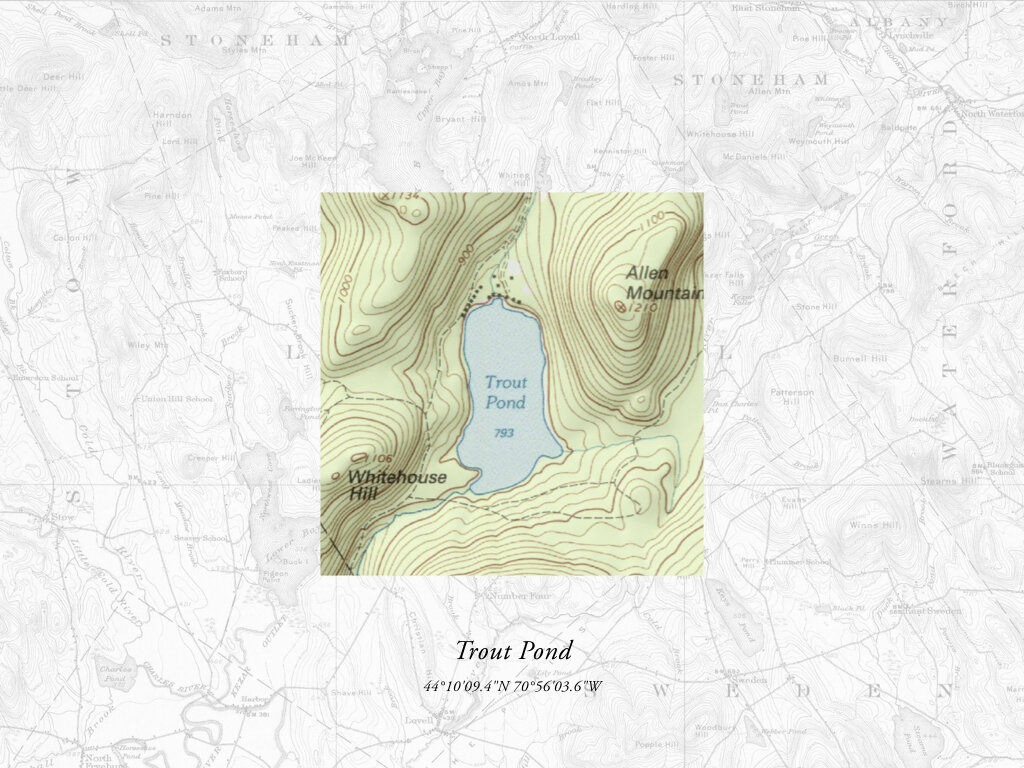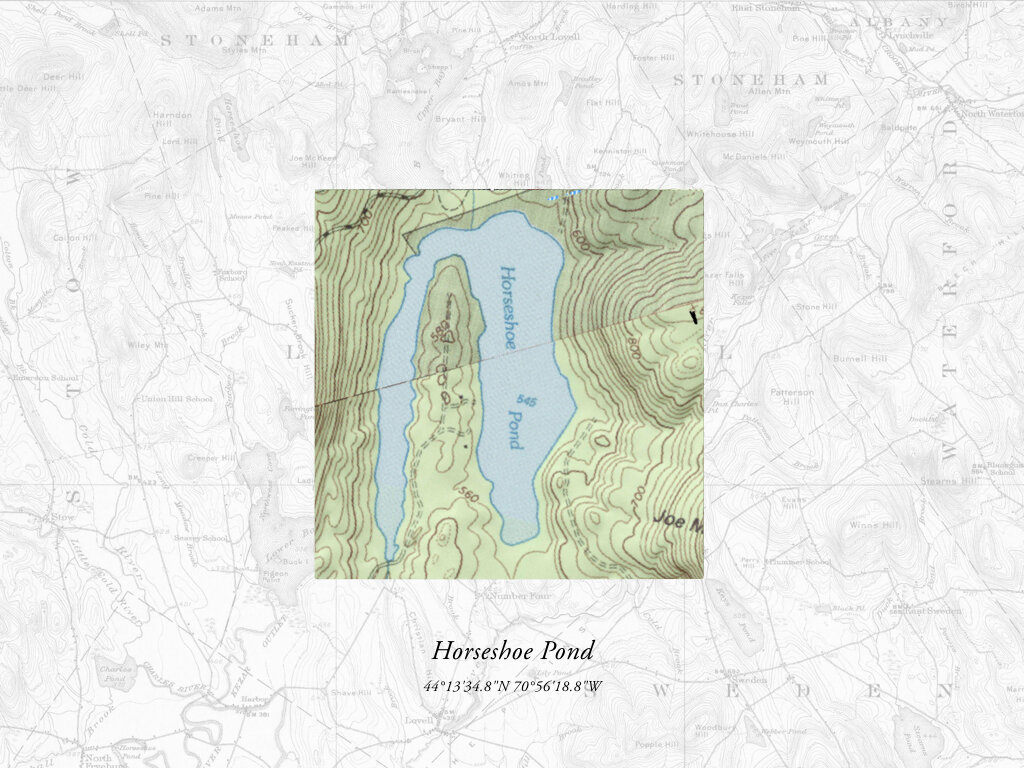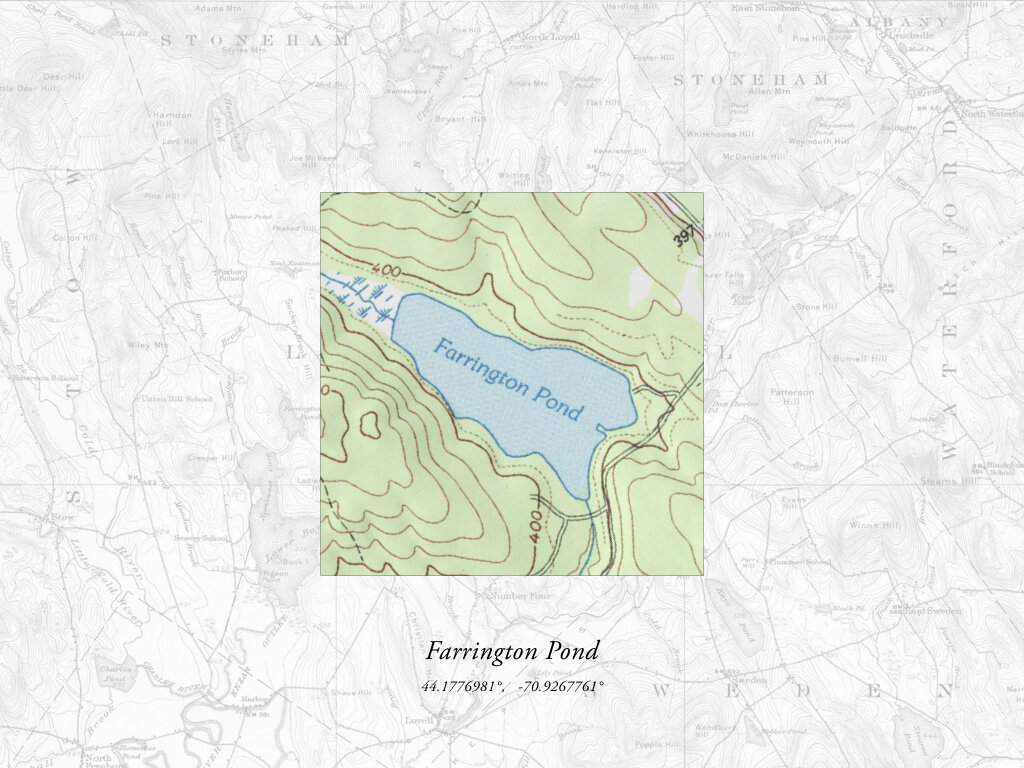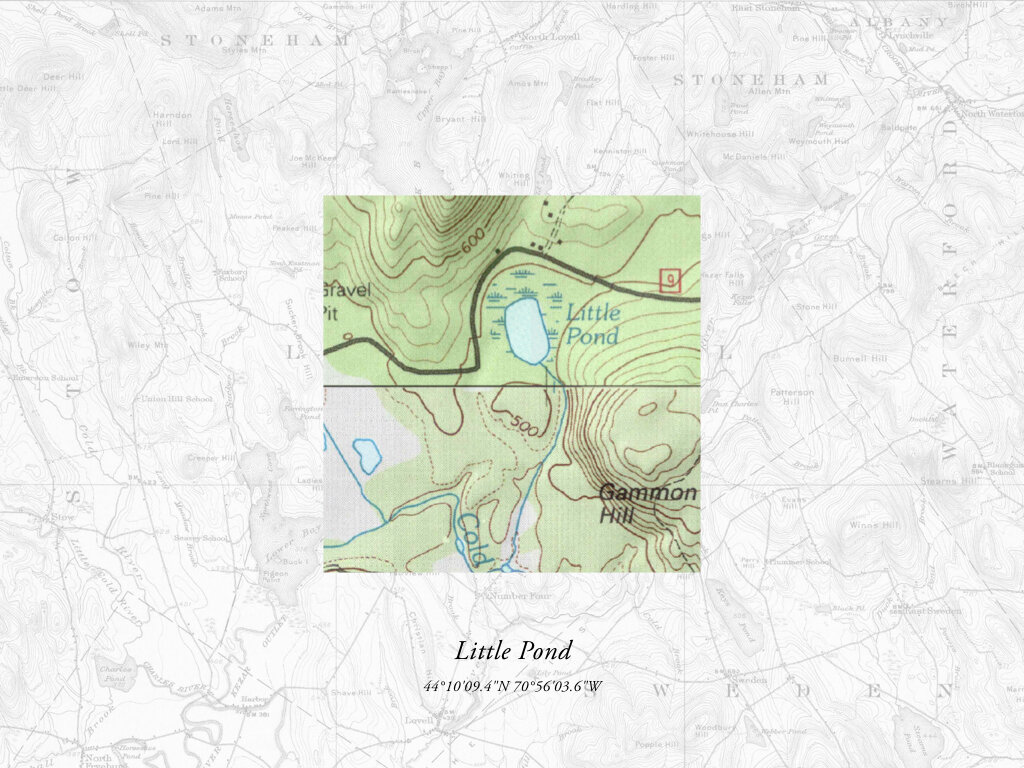Ponds of the Watershed
Click on a pond to learn more
Vernal Pools of the Watershed
Vernal pools are isolated shallow depressions that hold water from melting snow, spring rains, and/or rising ground water. These ephemeral bodies of water, which often dry up in the summer, provide essential habitat for numerous species.
In the Kezar Lake Watershed, vernal pools in the forested landscape are critical breeding grounds for various species of frogs and salamanders. Because vernal pools have no permanent in or outflowing waters, these creatures are protected from fish who would otherwise feast on their egg masses and young.
In Maine, “Significant Vernal Pools” are protected under the Natural Resources Protection Act. Four indicator species, all of which exist within our watershed, help determine whether a vernal pool is significant. A vernal pool is deemed significant if it has 40 or more Wood Frog egg masses; 20 or more Spotted Salamander egg masses; 10 or more Blue-spotted Salamander egg masses; or the presence of Fairy Shrimp, a fresh-water version of brine shrimp, or sea monkeys.
A 250’ forested buffer must be maintained around a significant vernal pool to provide some protection to the amphibians as they disperse into the surrounding landscape after breeding (though they can travel as much as a 1000’). Significant vernal pools represent highly functional ecosystems that provide habitat and food-sources for a much larger diversity of species beyond the four indicator species, including other frogs, mammals, and birds.
Researchers from the University of Maine Orono, Bowdoin College, and elsewhere have created an outstanding website–Of Pools And People–with an abundance of fascinating information, videos, and resources (including for kids) about vernal pools. It is well worth checking out, and will likely get you excited about exploring some of the vernal pools within our watershed.











